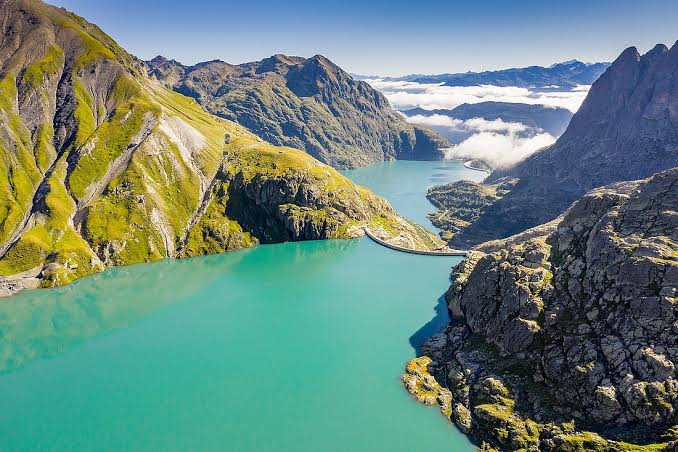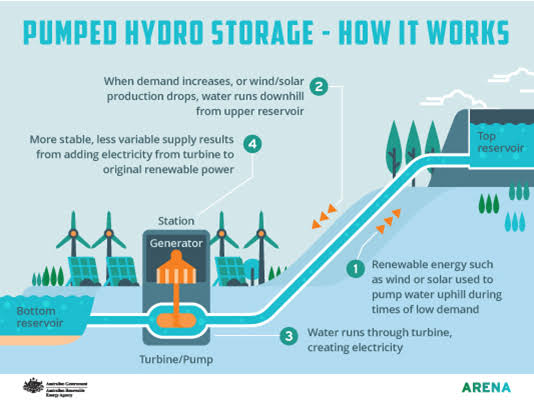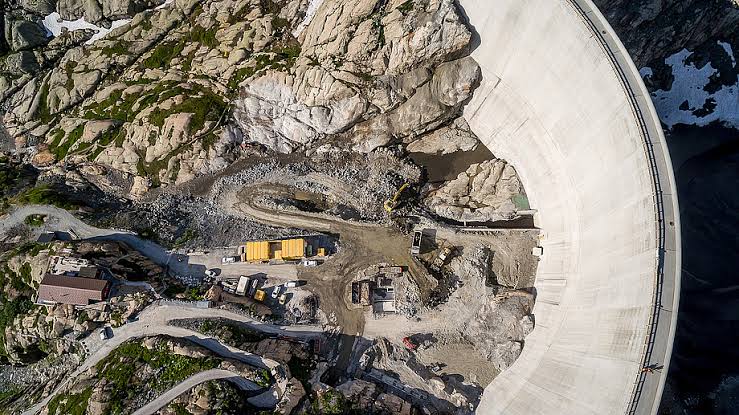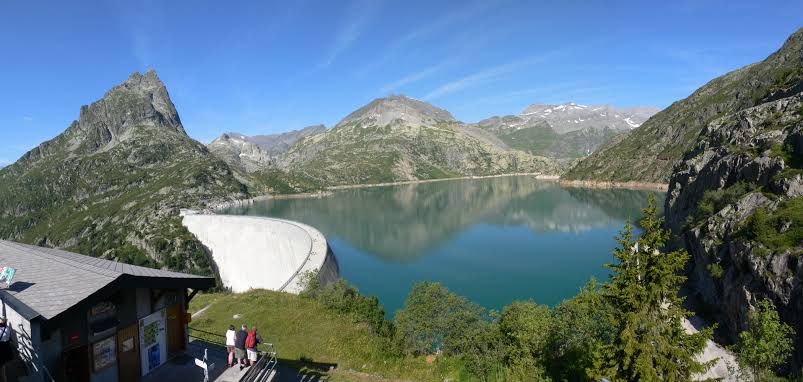Switzerland has successfully completed the project of giant water battery that can power to store up energy for Four hundred thousand electric cars. Let’s dig a bit…
Table of Contents
Swiss Battery:

Switzerland, the amazing country has turned on the giant water battery that took about 14 years to built at Nant de Drance in the Alps. This battery will be an inspiring example of how humans can ignore the fossil fuels and use really renewable sources to produce and store energy whenever needed.
The battery is built between two reservoirs of Emosson and Vieux Emosson dams in Valais. They are located in the southwestern part of the country.
The water battery has a storage capacity of 20 million kWh or 20 GWh which is expected to help stabilizing the energy grids in Switzerland and some parts of Europe. The battery, in a rough estimate can charge upto 400,000 electric cars at a time.
What is a water battery:

Water battery is simply two pools of water stored in different heights. The water is sent up or run down according to needs again and again as a renewable source of energy to produce electricity whenever needed.
When power production exceeds the need of the grid ,the excess power is used to pump the water from the lower pool to higher pool ( Charging Mode). Again when the demand of electricity rises, the water in the higher pool is released through turbines that generates electricity to supply for the grid( Electricity Production Mode). Thus no water is wasted and can be used time and again for producing electricity as much as needed.
How Costly Water Battery is:

Switzerland has been working on the giant battery since the year 2008. It took a long time and effort to bring the water battery into work. The engineers dug a 18 kms long tunnel through the Swiss Alps. The height of the Vieux Emosson dam is increased about 20 metres or 65 feet, so that the reservoirs can hold more water resulting in producing more energy.The engine room of the plant is about 200 meter long and 32 meter wide. More than € 2 billion Euros invested to make it operational. There are Six turbines to generate about 90 MW of power. All these efforts are due to the fact that only water batteries have the largest capacity to store grid energy in such a massive scale.
How Effective the Water Battery is:
When the demand for electricity will increase, the water battery is capable to switch from charging mode ( filling up the higher reservoir with water from the lower reservoir) to electricity production mode ( returning the water from higher reservoir to the lower) in about 10 minutes. The fully charged battery can power upto Nine hundred thousand homes. The efficiency of the battery is about 80% which is now operational.
Also Read BATTERY THAT CHARGES ITSELF
FAQ:
Q1: What is a water battery?
Water battery is a hydroelectric power plant where two pools of water , one higher and one lower, are used as a renewable source of energy. Here energy or electricity is stored as form of water just like a battery, hence the name is such.
Q2. Can I carry a Water battery?
No, water battery is not portable but needs a huge area and technical things to be operational.
Q3.What is the difference between a hydroelectric power plant and a water battery?
A hydroelectric plant situated on a river or near sea, is not based upon the renewal of the same water for generating electricity. But water battery uses the same water again and again effectively and generates electricity which is non polluting.
Q4. Are there other Water batteries in the world?
Yes, in the United States, China and in other countries also hydroelectric power plants have been set up to meet demand of electricity which comes from non polluting sources.
(All the images used in the article are never intended for copyright violation. News source: EuronewsFeature image: wikipedia)
